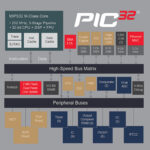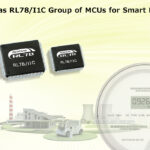Embedded engineers design and develop electronics hardware and software for many different market segments, often called “vertical markets.” Major vertical markets include automotive, medical, industrial, military/aerospace, and consumer electronics. Of these major markets, some co mmonly desired attributes of electronics emerge.
mmonly desired attributes of electronics emerge.
Automotive requirements include small size, low weight, low cost, power efficient, reliable electronics with ratings for harsh environments due to vibration and high temperatures, especially under the hood. For the medical industry, equipment must be reliable, accurate, and often small and portable, rugged, and otherwise suited for harsh environments (e.g., rough handling in emergencies, exposure to fluids.) In addition, many regulations govern medical equipment. Industrial equipment tends to require rugged equipment for harsh environments, accuracy, reliability, and power efficiency. Military/aerospace equipment is exceptionally rugged and specifications go beyond that of industrial requirements. Military/aerospace equipment runs the gamut in needs for requirements of portability, accuracy, and reliability. Modern consumer electronics require portability and often low cost. What does this mean for choosing a microcontroller?
Semiconductor companies that manufacture microcontrollers (MCUs) will very often categorize MCUs for each vertical by identifying the vertical or specific applications in the datasheet. Below is a list of each vertical market segment and what each vertical tends to require from MCUs (and electronic devices in general):
Automotive
If a device is identified in a bulleted list on the first page of the datasheet as being suitable for automotive, it’s immediately apparent that the MCU will be broadly tuned for small size and weight, a temperature tolerance of at least -40C to 85C, power efficiency, and possibly certification by the Automotive Electronics Council (AEC). AEC-Q certification is not a regulatory certification, but a means for automakers to ensure that automotive products are qualified to a set standard as established by the AEC, “for the purpose of establishing common part-qualification and quality system standards.”[i] A primary driver of these requirements is safety and because cars need to meet minimum miles per gallon (mpg) gas requirements. In the U.S. in 2012, the minimum was set at 54.5 mpg for cars and light-duty trucks by 2025.[ii] Cars that are light and power efficient use less gas, and with an aggressive minimum mpg, car makers are even looking at integrated chip weight and power consumption. Last, automotive components are extremely sensitive to price. Car makers will haggle over fractions of a penny in component cost since cars are a high-volume enterprise and those fractions add up. The automotive industry is regulated due to safety and environmental concerns.
Medical
Medical equipment should be reliable, accurate, rugged, suited for harsh environments, and often small and portable. The medical electronics industry is also very regulated. Besides regulations, medical equipment often must be handheld or portable as much of the equipment in daily use is carried or rolled from patient to patient. To make a device portable, design engineers will look for the smallest IC packages and the best power efficiency, since mobile equipment is often battery-operated or at least rechargeable. The same equipment might also need to be capable of withstanding rough treatment, high temperatures, and be resistant to splashing fluids; all which qualify medical equipment as being suitable for harsh environments. Accuracy is also important and translates to low noise devices. Precision output with high resolution enables medical personnel to view detailed nuances in patient data. Reliability is also a major concern since devices that break down or create errors can contribute to needless loss of life.
Industrial
Industrial equipment should be rugged for harsh environments, accuracy, reliability, and power efficiency. Harsh environments can refer to high temperature, vibration, water or chemical exposure, and more. Often industrial equipment is inaccessible to people on a regular basis, maybe because the devices is located far away on a pipeline or in an area that’s difficult or dangerous to reach for maintenance. These devices are going to be rated for very low or high temperatures and inside special enclosures that many or may not have ventilation. Additionally, without human intervention, they might need to survive on a single battery for months or years and thus may need to be power efficient. Industrial sensors need to be accurate and reliable to avoid costly errors or breakdown of the equipment that the industrial-rated MCU is controlling and monitoring.
Military/Aerospace
Military/aerospace equipment have specifications that go beyond that of the industrial vertical markets. Military/aerospace equipment is very broad in the kind of applications they serve, but what they have in common is extreme ruggedness and a high level of quality for reliability. Increasingly, portability is required due to the proliferation fo wireless communication, which translates to battery-powered devices with power-sipping MCUs. MCUs with multiple sleep states are one means of achieving power efficiency. Accuracy and reliability are also part of the high-quality performance often seen with military/aerospace equipment.
Consumer electronics
Modern consumer electronics require portability for reasons stated above, and a majority of consumer electronics products use MCUs of the lowest cost. However, besides military applications, the consumer electronics segment has grown to become the largest consumer and driver of new technology in recent decades.
[i] “AECMain.” www.aecouncil.com. N.p., n.d. Web. 27 Nov. 2016.
[ii] “Obama Administration Finalizes Historic 54.5 MPG Fuel Efficiency Standards.” The White House. The White House, 28 Aug. 2012. Web. 27 Nov. 2016.




Leave a Reply